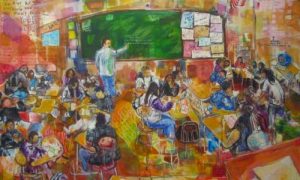Teaching Languages to Young Learners – Recent years have seen rapid growth in the numbers of children being taught foreign languages at younger ages. While course books aimed at young learners are appearing on the market, there is scant theoretical reference in the teacher education literature. Teaching Languages to Young Learners is one of the few to develop readers’ understanding of what happens in classrooms where children are being taught a foreign language.

It will offer teachers and trainers a coherent theoretical framework to structure thinking about children’s language learning. It gives practical advice on how to analyze and evaluate classroom activities, language use and language development. Examples from classrooms in Europe and Asia will help bring alive the realities of working with young learners of English.
Recent years have seen rapid growth in the numbers of children being taught foreign languages at younger ages. While course books aimed at young learners are appearing on the market, there is scant theoretical reference in the teacher education literature. Teaching Languages to Young Learners is one of the few to develop readers’ understanding of what happens in classrooms where children are being taught a foreign language. It will offer teachers and trainers a coherent theoretical framework to structure thinking about children’s language learning. It gives practical advice on how to analyze and evaluate classroom activities, language use and language development. Examples from classrooms in Europe and Asia will help bring alive the realities of working with young learners of English.
After reading “Teaching Languages to Young Learners”, you can check important issues for ESL teachers on the section PDFs. And visit my channel by YouTube.





